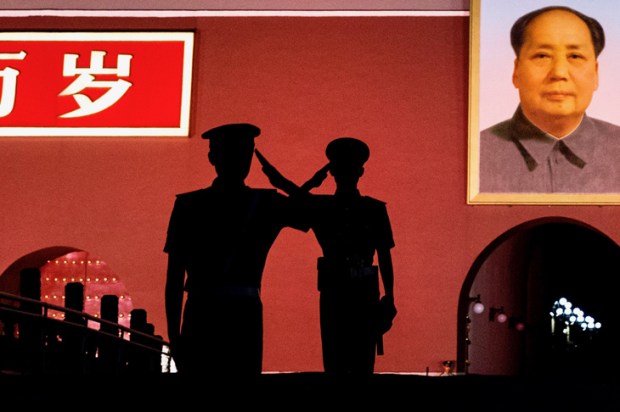You have to tip your hat to Dan the Man, Premier of Victoria. Andrews is a consummate politician even if he’s an appalling policy-maker. The opposition has not been able to lay a glove on him all the time he’s had the top job.
Didn’t you just love his recent clandestine trip to China? We still don’t know why he went and no journalists were allowed to accompany him. I have a theory – a bit like the moon landing taking place in a warehouse in Pennsylvania – that he didn’t actually go but was hanging out at his rich mate’s holiday house. But quite a few voters in Aston – around 20 per cent are of Chinese ancestry – were impressed by the apparent visit, helping Labor to win the by-election on a very decent swing.
But even the very best politician faces some reality road blocks from time to time. And in this case, the massive overspending by the Victorian government and its mammoth over-budget and delayed infrastructure projects have begun to take a serious toll on the state’s balance sheet. Now that interest rates are rising, the fastest growing line item in the budget is net interest payments.
It was not always the case that (recent) Labor governments in Victoria were profligate over-spenders. When Steve Bracks surprisingly became premier and was then replaced by John Brumby, the finances of Victoria were well maintained. To be sure, the Liberal’s Jeff Kennett had done the hard yards by rescuing a cripplingly bad fiscal situation bequeathed by Labor nutters, John Cain and Joan Kirner. Even so, hats off to Bracks and Brumby. (I’m really giving my hat a workout here.)
But what is the current situation? The Andrews government has spent massively ramping up the public sector and commissioning a number of large infrastructure projects that are costing many billions of dollars more than initially anticipated. There is even a name for this infrastructure spending: the Big Build program and the ‘benefits’ are constantly advertised on TV and radio (as well as information about the months-long closures of convenient thoroughfares.) The pandemic gave the Andrews government an excuse to throw all fiscal caution to the wind.
According to last year’s state budget, there won’t be a budget surplus until 2025-26 and it will be the laughably small figure of $700 million. In the meantime, net government debt will balloon from $73 billion in 2020-21 to $167 billion in 2025-26. This shifts the dial in terms of net debt as a percentage of gross state product from 15 per cent to 25.5 per cent over the period.
(Weirdly, the 2022 Victorian budget was given the catchy title ‘Putting Patients First’. It has been a long-standing practice to give budgets politically appealing labels, but this one really is extraordinarily narrow. What about all the other responsibilities of state governments?)
Victoria is now in the unenviable position of being the most indebted state in the nation, pipping Queensland to the post – and that’s saying something. The state’s prized AAA credit rating was lost in December 2020 and the ratings agencies are still watching carefully. There is little doubt that some dubious recent prediction that 10,000 Victorian public servants could lose their jobs – it was headline news in the local rag – because of the state’s parlous budgetary position was for the benefit of the ratings agencies. It won’t happen and anyone in the know understands this.
One of the most important line items in state budgets is employee expenses. This is because state governments actually do things such as run schools and hospitals and therefore employ a lot of people. It’s both numbers and the cost per head that matter. We know that the number of public sector workers has exploded in Victoria. In 2015, there were 223,000 (in full-time equivalent terms) state public sector workers; six years later, the number had risen to 284,000 – a rise of over 25 per cent.
This financial year, employee expenses are expected to come in at $33 billion, with further rises on the horizon. In the decade ending 2025-26, employee expenses will have gone up by at least $15 billion. I say at least because the Victorian Treasury has consistently underestimated the growth of employee expenses. For example, in 2020-21, the expectation was that employee expenses would be $25.4 billion; they turned out to be $30 billion.
Needless to say, the Andrews government has no intention of picking a fight with its trade union mates. Indeed, the decision to spend big on infrastructure is in part driven by the requirement to provide very highly paid jobs for their union mates in the Construction, Forestry, Maritime, Mining and Energy Union. Likewise, you won’t see any minister in the Andrews government going in hard to contain costs in the public sector more generally.
What can be said about the Big Build program other than to say that it has, with a few exceptions, been a complete shemozzle? The West Gate Tunnel, which will provide a second river crossing, was initially costed at just over $5 billion; it is likely to cost at least triple that figure.The new underground project, the Metro Tunnel, is a complete train wreck (gettit?) in every sense, with a recent pay deal for some of those working on the project of $300,000 per year per worker.
Rather than accept that Victoria is no good at building large, ambitious infrastructure projects, the Andrews government is doubling down by proposing the Suburban Rail Loop. The loopy (geddit?) idea is to create a train connection around Melbourne’s outer suburbs, with lots of tunneling required. I’m not sure who really wants to go from one outer suburb to another one ten kilometres away, but Dan the Man is too busy to consider such minor details.
This ninety-kilometre folly is expected to cost at least $200 billion, but that really is a complete guess. Luckily, the state’s auditor-general is keeping tabs on this reckless proposal but no one seems to listen to reason much.
Is it any wonder that the Andrews government is seeking a bail-out from the federal government? The debt is unsustainable, a number of projects are essentially stuck in limbo because of cost overruns and delays, the costs of running the public sector are escalating – it’s not looking good.
There is no doubt that Federal Treasurer Jim Chalmers will tell Andrews to get nicked, nicely of course. Perhaps that’s why Dan went to China: to secure some new sources of funding. You know it makes sense.
Got something to add? Join the discussion and comment below.
You might disagree with half of it, but you’ll enjoy reading all of it. Try your first month for free, then just $2 a week for the remainder of your first year.













